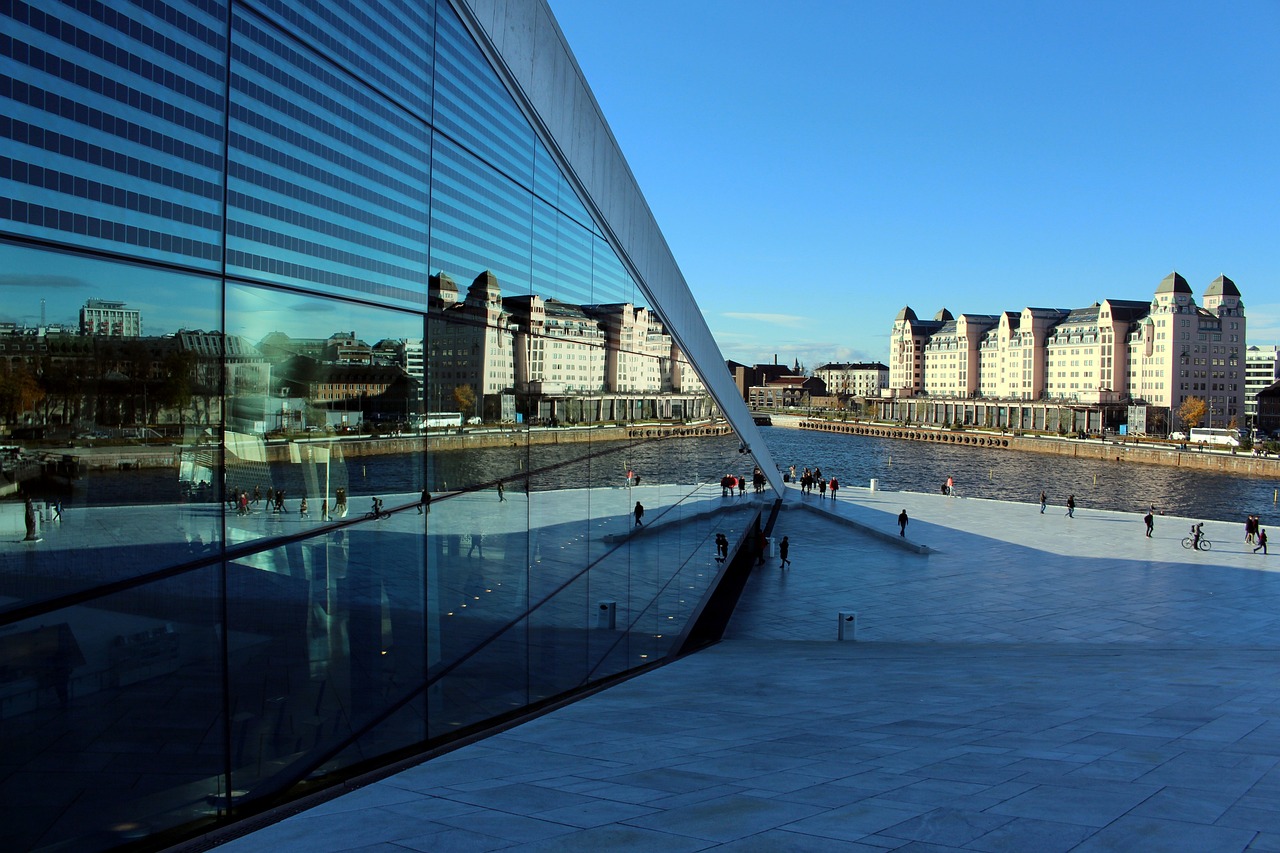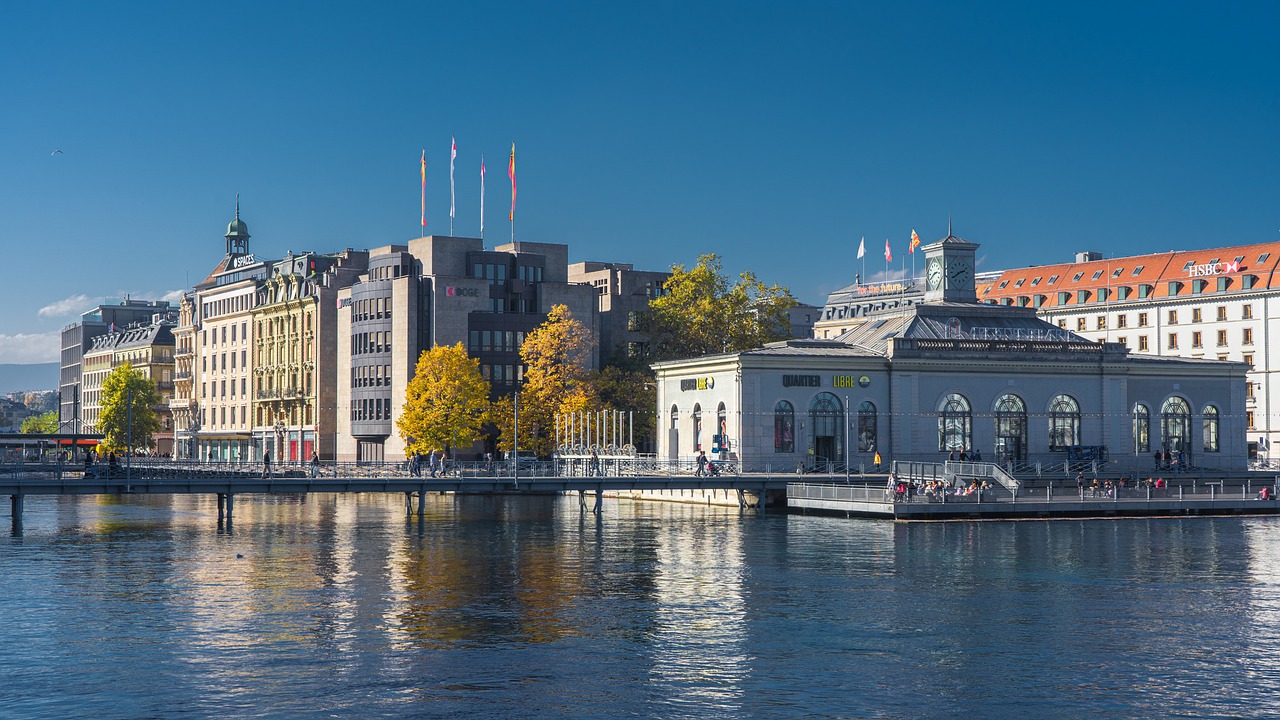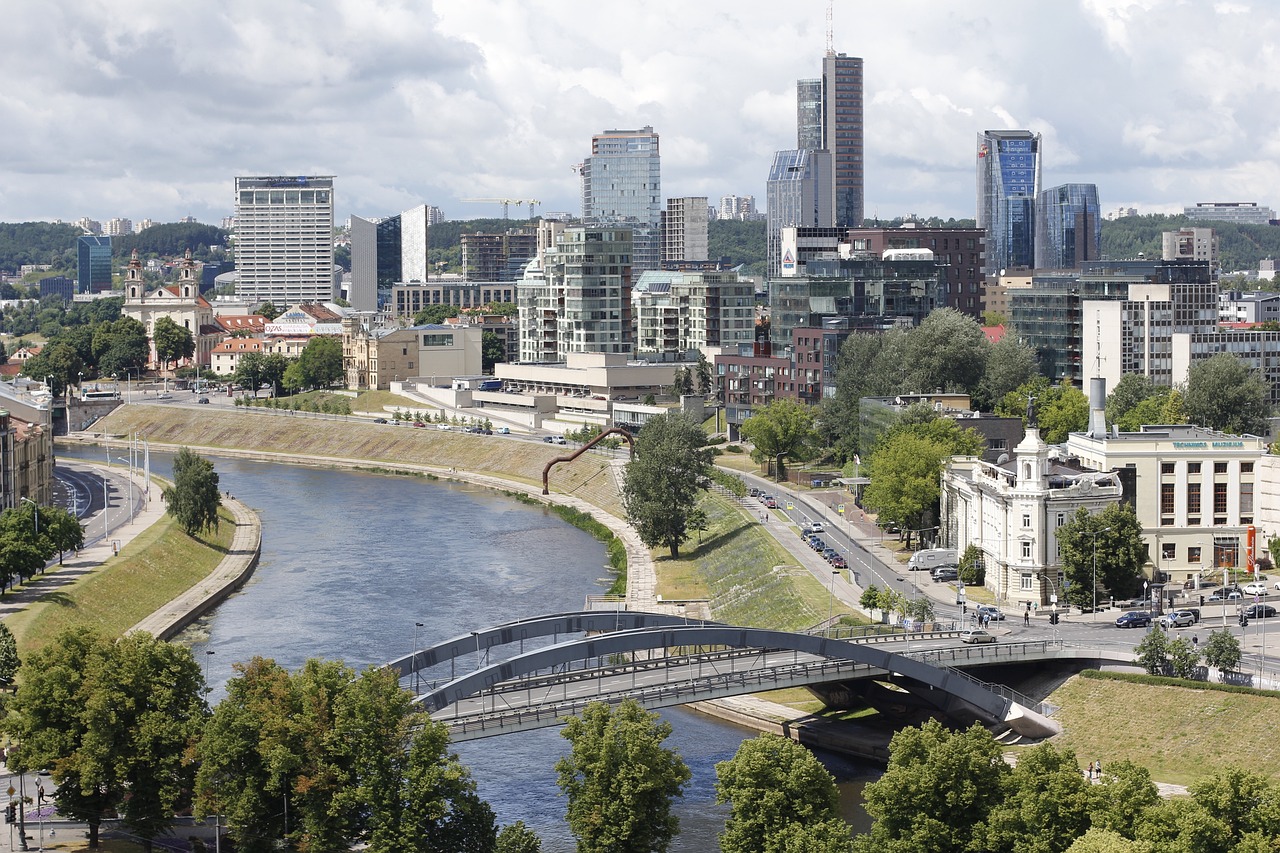Oslo is the capital and largest city of Norway, located in the southeastern part of the country on the Oslofjord. It is situated at the head of the Oslofjord, a long and narrow inlet that stretches inland from the Skagerrak Strait. Oslo is known for its stunning natural scenery, including forests, lakes, and mountains, as well as its rich cultural heritage and vibrant contemporary arts and music scenes. The city is also a hub for business and technology, and is home to many major companies and startups.
Short History
Oslo has a long and rich history, dating back to the Middle Ages when it was founded as a trading post. It was originally known as Oslo and served as the capital of Norway during the Viking Age. Over the centuries, the city grew and became an important cultural and economic center in Scandinavia.
In 1624, the city suffered a devastating fire that destroyed much of the old town. It was subsequently rebuilt on a new site nearby and renamed Christiania, after the king at the time. The city remained under Danish rule until 1814, when it became part of an independent Norway.
During the 19th and early 20th centuries, Oslo underwent significant modernization and development, with new infrastructure, buildings, and cultural institutions being built throughout the city. In 1925, the city was officially renamed Oslo, and today it remains a vibrant and dynamic city that is known for its rich cultural heritage, stunning natural scenery, and innovative contemporary culture.
Architecture
The architecture of Oslo is diverse and reflects the city’s long and varied history. Some of the most notable architectural styles found in Oslo include:
- Medieval architecture: Although much of the city’s medieval architecture was destroyed in fires, there are still a few examples of this style remaining, including parts of the Akershus Fortress.
- Neoclassical architecture: This style was popular in Norway during the 18th and 19th centuries, and examples can be seen in buildings such as the Royal Palace and the Stortinget (Parliament).
- Art Nouveau architecture: This style was popular in Norway during the early 20th century, and is characterized by its flowing lines and naturalistic forms. Examples of this style in Oslo include the City Hall and the former headquarters of the Norwegian Engineers’ Association.
- Modernist architecture: Oslo has a number of notable examples of modernist architecture, including the iconic Oslo Opera House and the Holmenkollen Ski Jump.
- Contemporary architecture: In recent years, Oslo has become known for its innovative and sustainable contemporary architecture, with notable examples including the Barcode Project and the Munch Museum.
The architecture of Oslo is a fascinating blend of styles that reflects the city’s long and varied history, as well as its current position as a hub of contemporary design and innovation.
Museums and Galleries
Oslo is home to a vibrant and diverse arts and culture scene, with many museums and galleries showcasing the city’s rich cultural heritage and contemporary artistic innovations. Here are some of the most interesting museums and galleries to visit in Oslo:
- The Munch Museum: Dedicated to the life and work of Norwegian painter Edvard Munch, this museum features the largest collection of Munch’s paintings, drawings, and prints in the world.
- The National Gallery: Home to Norway’s largest public collection of paintings, sculptures, and other works of art, the National Gallery includes works by both Norwegian and international artists.
- The Astrup Fearnley Museum of Modern Art: This contemporary art museum features works by leading international artists, including Damien Hirst, Jeff Koons, and Cindy Sherman.
- The Viking Ship Museum: One of the city’s most popular tourist attractions, this museum houses three 9th-century Viking ships and other artifacts from the Viking Age.
- The Norwegian Museum of Cultural History: Located on the outskirts of the city, this open-air museum features more than 150 historic buildings from all over Norway, providing a fascinating glimpse into the country’s cultural heritage.
- The Nobel Peace Center: Located in the heart of the city, this museum is dedicated to promoting peace and celebrating the achievements of Nobel Peace Prize laureates.
Oslo’s museums and galleries offer a rich and diverse array of cultural experiences, from exploring the works of world-renowned artists to delving into the country’s fascinating history and cultural heritage.
Landmarks and Monuments
Oslo is home to a wealth of interesting landmarks and monuments that showcase the city’s rich history and cultural heritage. Here are some of the most interesting landmarks and monuments to visit in Oslo:
- The Royal Palace: Located in the heart of the city, the Royal Palace is the official residence of the Norwegian monarch and a popular tourist attraction.
- Akershus Fortress: Dating back to the 13th century, this historic fortress and castle has played an important role in Norwegian history and is now a popular tourist destination.
- The Viking Ship Museum: Home to three 9th-century Viking ships, this museum is a fascinating glimpse into Norway’s Viking heritage.
- The Oslo Opera House: One of the city’s most iconic modern landmarks, this stunning white building sits on the edge of the Oslofjord and is home to the Norwegian National Opera and Ballet.
- Holmenkollen Ski Jump: This historic ski jump is one of Norway’s most recognizable landmarks and is a popular tourist attraction, offering stunning views over the city.
- The Vigeland Sculpture Park: This expansive park is home to more than 200 sculptures by Norwegian artist Gustav Vigeland, making it one of the largest sculpture parks in the world.
- The National Museum: This iconic museum building is home to a wide range of exhibits and collections showcasing Norway’s cultural and natural history.
Oslo’s landmarks and monuments offer a fascinating glimpse into the city’s rich history and culture, from its Viking heritage to its contemporary arts and architecture.
Parks and Green Spaces
Oslo is known for its stunning natural scenery and abundance of green spaces, making it a great destination for outdoor enthusiasts. Here are some of the most beautiful parks and green spaces to visit in Oslo:
- Frogner Park: This expansive park is home to the famous Vigeland Sculpture Park, as well as beautiful gardens, fountains, and lakes.
- Bygdøy: This peninsula just outside of Oslo is home to several popular museums and attractions, as well as beautiful beaches and hiking trails.
- Ekeberg Park: Located just east of the city center, this park is known for its panoramic views of Oslo and its collection of modern art sculptures.
- Østensjøvannet Nature Reserve: This protected wetland area on the eastern edge of the city is home to a variety of bird species, as well as hiking trails and picnic areas.
- St. Hanshaugen Park: This popular park in central Oslo features a hill with panoramic views of the city, as well as gardens and walking paths.
- Akerselva River: This scenic river runs through the heart of Oslo, and is surrounded by parks, walking trails, and outdoor cafes.
Oslo’s parks and green spaces offer a great escape from the hustle and bustle of the city, with plenty of opportunities for hiking, biking, picnicking, and enjoying the natural beauty of the Norwegian landscape.
Shopping Districts
Oslo is known for its vibrant shopping scene, with a wide variety of shopping districts and neighborhoods to explore. Here are some of the best shopping districts in Oslo:
- Karl Johans Gate: This pedestrianized street in the heart of Oslo is home to many of the city’s most popular shops, restaurants, and cafes.
- Grünerløkka: This trendy neighborhood on the east side of the city is known for its independent boutiques, vintage shops, and hip cafes.
- Aker Brygge: This waterfront district is home to many upscale shops, as well as restaurants and cafes with beautiful views over the Oslofjord.
- Majorstuen: This affluent neighborhood in western Oslo is known for its high-end shops and boutiques, as well as its beautiful parks and gardens.
- Bogstadveien: This street in the Frogner neighborhood is known for its trendy shops and boutiques, as well as its vibrant nightlife scene.
- Mathallen Food Hall: Located in the trendy Grünerløkka neighborhood, this indoor food hall features a wide variety of local and international food vendors, as well as shops selling gourmet products.
Oslo’s shopping districts offer something for everyone, from high-end fashion to independent boutiques, gourmet food shops, and more. Whether you’re looking for a souvenir to take home or just want to window shop, there’s plenty to explore in Oslo’s many shopping districts.
Food and Drink
Norwegian cuisine is known for its focus on fresh, local ingredients, and Oslo is no exception. Here are some of the most popular foods and drinks to try in Oslo:
- Seafood: Norway is known for its fresh and delicious seafood, and Oslo is a great place to try dishes like smoked salmon, pickled herring, and shrimp.
- Brown cheese: This unique Norwegian cheese is made from goat’s milk and has a sweet, caramelized flavor. It’s often eaten on toast or with crackers.
- Reindeer: Reindeer meat is a traditional Norwegian food, and can be found on many restaurant menus in Oslo.
- Aquavit: This traditional Scandinavian spirit is made from potatoes and flavored with herbs and spices like caraway, dill, and anise.
- Craft beer: Oslo has a thriving craft beer scene, with many local breweries producing delicious and unique beers.
- Kvæfjordkake: This Norwegian cake is made with layers of meringue, buttercream, and almonds, and is a popular dessert in Oslo.
Oslo offers a wide variety of delicious and unique foods and drinks to try, from fresh seafood to traditional Norwegian dishes and local craft beer.
Transportation
Oslo has a variety of transportation options that make it easy to get around the city. Here are some of the best ways to move around Oslo:
- Public transportation: Oslo has an extensive public transportation network, including buses, trams, and trains. The Oslo Metro, or T-bane, is particularly efficient and connects the city center with the suburbs and outlying areas.
- Walking: Oslo is a very walkable city, and many of the major sights and attractions are located within easy walking distance of each other. Walking is also a great way to explore some of the city’s neighborhoods and green spaces.
- Cycling: Oslo has a growing cycling culture, and the city has invested in bike lanes and other cycling infrastructure to make it easier and safer to get around by bike. There are also several bike rental options available throughout the city.
- Taxi: Taxis are widely available in Oslo, and can be a convenient option for getting around the city quickly and comfortably.
- Car rental: If you’re planning to explore some of the areas outside of Oslo, renting a car can be a good option. There are several car rental companies available in the city, and the road network is generally well-maintained and easy to navigate.
Oslo has a variety of transportation options that make it easy to get around the city, whether you prefer to walk, cycle, take public transportation, or rent a car.
City Safety
Oslo is generally considered to be a very safe city. Crime rates in Oslo are relatively low compared to other major cities around the world, and violent crime is rare. However, as with any city, it’s important to take basic safety precautions to ensure that you have a safe and enjoyable visit. Here are some tips for staying safe in Oslo:
- Be aware of your surroundings and avoid walking alone in isolated or poorly lit areas.
- Keep your valuables in a secure place, such as a hotel safe or money belt.
- Use caution when withdrawing money from ATMs, especially late at night.
- Follow traffic signals and use crosswalks when crossing the street.
- Take care when using public transportation, especially at night.
- Be cautious when accepting drinks from strangers, and never leave your drink unattended.
Overall, Oslo is a very safe city, but it’s important to take basic safety precautions and use common sense to ensure that you have a safe and enjoyable visit.
Expensive or Cheap
Oslo is generally considered to be one of the most expensive cities in the world. The cost of living in Oslo is high, with prices for food, accommodation, and transportation being significantly higher than in many other cities around the world. However, this is partly offset by the high wages and social benefits that many Norwegians enjoy. Some tips for saving money in Oslo include:
- Eat out less often and cook your own meals.
- Take advantage of the city’s many free attractions and activities.
- Use public transportation rather than taxis or rental cars.
- Stay in budget-friendly accommodation options such as hostels or Airbnb.
- Look for deals and discounts on attractions, transportation, and other expenses.
While Oslo may be an expensive city to visit, it is also a unique and beautiful destination that offers a wide range of attractions and experiences that are well worth the cost.
Date Ideas
Oslo is a romantic and picturesque city that offers plenty of options for couples looking for a memorable date. Here are some date ideas for couples in Oslo:
- Take a scenic walk: Oslo is a beautiful city, with many parks, waterfronts, and scenic overlooks to explore. Take a leisurely walk with your partner and enjoy the stunning views.
- Visit a museum: Oslo is home to a variety of interesting and informative museums, such as the Munch Museum, the Viking Ship Museum, and the Norwegian Museum of Cultural History.
- Go on a boat ride: Take a romantic boat ride on the Oslofjord and enjoy the stunning views of the city and the surrounding landscape.
- Enjoy a picnic: Oslo has many beautiful parks and green spaces that are perfect for a romantic picnic. Pack a lunch or pick up some local treats from a food market and enjoy a leisurely picnic with your partner.
- Take a cooking class: Learn how to make traditional Norwegian dishes with your partner by taking a cooking class together.
- Visit a spa: Oslo has many luxurious spas that offer a variety of treatments and services, including couples massages and romantic packages.
Oslo offers many unique and memorable date ideas for couples, whether you prefer to explore the city’s natural beauty, cultural attractions, or culinary delights.
Fun and Interesting Facts
Oslo is a fascinating city with a rich history and culture. Here are some fun and interesting facts about Oslo:
- Oslo is one of the greenest cities in the world, with more than 340 parks and open spaces.
- The Oslo Opera House, one of the city’s most iconic landmarks, was designed to look like a glacier floating in the Oslofjord.
- The famous Norwegian artist Edvard Munch, best known for his painting “The Scream,” was born and raised in Oslo.
- The Nobel Peace Prize is awarded annually in Oslo, in the presence of the Norwegian royal family.
- Oslo has a vibrant street art scene, with many colorful murals and graffiti works throughout the city.
In conclusion, Oslo is a city that offers a unique blend of natural beauty, cultural attractions, and modern amenities. With its green spaces, stunning architecture, and rich history, Oslo is a city that is well worth a visit. Whether you’re interested in exploring its museums and galleries, dining on delicious local cuisine, or simply taking in the breathtaking scenery, Oslo has something to offer for everyone.



